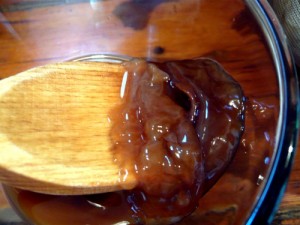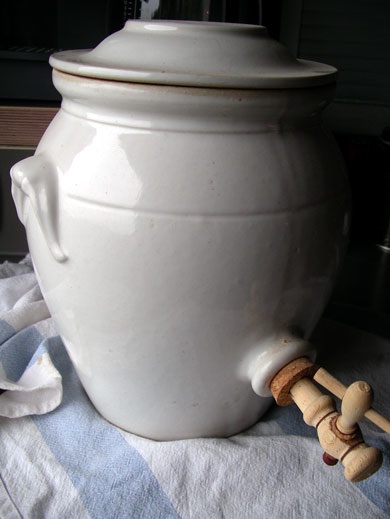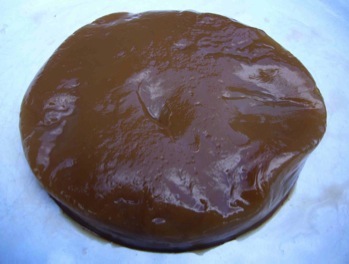
Collecting Acid Bactar: Making Vinegar
You might not want to read this, but here is the nitty gritty on vinegar: All vinegar — even the stuff you buy — got its start from the dirty feet of manure-loving flies, and it gets worse. Vinegar is the sewage of bacteria eating alcohol. And alcohol is the sewage of yeast eating sugar. Of course, we can clean up the nouns and verbs, skip the manure part, and say vinegar is made from alcohol and alcohol from sugar. Sounds nicer, doesn’t it.
Many years ago I was making a lot of wine and beer. Florida allows an individual to make a generous amount of beer and wine for personal use without running into legal issues. With so much wine I thought about making real vinegar. When most people say they make vinegar what they mean is they put spices et cetera into commercially produced vinegar. I wanted to make my own vinegar, from scratch so to speak. As it comes out, that is easy or a bit of a challenge, depending on how you want to do.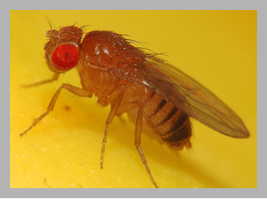
Here’s the easy way to make malt vinegar: Buy a six pack of beer with no preservatives, go to a wine supply store and buy a few ounces of mother, dump the mother into the warm, flat beer, put in a warm dark place, and soon you will have more vinegar and mother than you will ever need. Mother reproduces forever as long as you feed it so you need to only buy a vinegar mother once. I did that for a couple of years. Got to know how the mother behaved, looked and reproduced. And since it came from a lab where the acid bactar was bred for vinegar production, the product was consistent all the time.
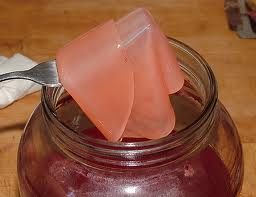
The only problem was everyone else with the same mother was getting the same vinegar. I wanted a mother all my own, a strain of acid bactar that no one else on earth had (in theory.) That meant I had to 1) collect it 2) make it into vinegar and 3) keep doing that until I found an acid bactar flavor I liked. You should know that both yeast and acid bactar can “throw” bad flavors, so not all wild yeasts or wild acid bactars will produce good wine or vinegar. When you collect from the wild, it is the luck of the draw. You might get a great mother the first try or it make take persistence.
In hindsight part two and part three, making and testing, were easy. It was part one that was the most difficult initially, collecting the acid bactar. I followed all the advice I could read back then — no internet in the Dark Ages — and failed completely. No wine or beer I ever set out ever collected one bit of vinegar bacteria. Ever. I tried for nearly a year and got absolutely nowhere. It was a complete failure. I put the project in the someday pile.
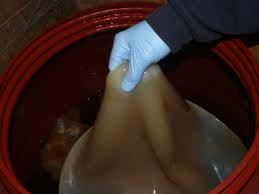
At the same time I moved to a place that had some property and was organic gardening intensely. I started to have a significant problem with moths and the like that come in the warm Florida nights and lay caterpillar eggs. I read of a natural trap one could make so I made one. I few weeks after I hung up the moth trap I looked inside and noticed it had worked very well; a lot of dead moths and other insects. I also noticed something else: Some vinegar mother. What I had failed to find intentionally was accidentally delivered unto me. I was just fortunate to recognize it when I saw it.
I not only cleaned and kept that mother, I started another trap, then another. Of the three strains I got, one was weak, that is it made a very mild vinegar. One tasted awful, and one was good. I’ve had that third mother more than 22 years. Maybe it’s time to find some more since I have moved a second time and might have even more interesting acid bactar is this area.
I refined my mother traps and ingredients as I went along and never failed to get a mother. This is the only place that I know of —until Internet copied, of course — on the internet where you can learn how to make a mother trap:
Once the weather is warm — read the insects are active — get a one or two liter/quart plastic soda bottle. Two liter/quart is easier to work with later on. Into it pour a cup or two of sugar, and two cups of water. Also drop in one banana peel, all of it, when you’re done eating the banana of course. Add a splash of vinegar for aroma, a teaspoon will do but the vinegar is not necessary. Leave the top off the bottle. You can stretched a small piece of cheese cloth with an elastic over the opening if you like but it is not necessary. That reduces the number of bug bodies but you want big enough holes for the vinegar fly to get through. Hang the bottle in the shade. (If you put it on the ground the ants and animals find it too soon.) An out-of-the-sun house eve is good or a tree. Between two and six weeks after you hang it up you should see some phlem-like cloudiness in the liquid. That is the acid bactar forming a mother. Sometimes it can happen in as little as two weeks. Also, if you live where it rains a lot, you also should hang it somewhere in the shade where it won’t fill up with rain water. (What happens is the wild yeast on the banana peel turns some of the sugar into alcohol which is food for the bacteria that drop off fly feet. If you don’t have a banana peeling some raisins or organic apple peelings will work or wild grapes.)
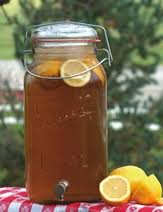
Because the bright daytime environment is not the best for the acid bactar, the mother probably won’t be a hard mother (hard like some of the stuff you cough up when you have a chest cold.) Now you have two choices. What I used to do was cut open the bottle, fish out some loose mother, remove as many bug parts as I could, and put that mother in a new alcoholic non nitrate-medium in a warm dark place. Dark is important. However, all you really have to do is strain the liquid though a paper filter or the like and use the juice to start the mother. It has the bacteria in the liquid. Either way in the new medium the bacteria will form a hard mother in a few weeks that will float on the top of the liquid while turning the liquid below into vinegar.
The difficult part is finding untreated wine to make into vinegar. It’s less of a problem with beer. Neither can have any preservatives or be treated to get rid of bacteria. It is not so much a problem with beer in that many beers have no preservatives. Wine is a different issue. You either have to make your own without any sulfides et cetera or buy it that way, often in health food stores called challice wine. Of course, you could make homemade apple cider — another article here — or make some beer. Either works well.
I intentionally made six-pack batches (about one gallon) of malt vinegar with my new-found mothers. It was cheap and easy to use one particular beer (Miller’s) so that way I could compare the flavors the acid bactar were throwing without having to contend with different flavors of beer. It takes about three months to get a real good zip to the vinegar. Then you bottle it and drop in some sulfide to kill the bacteria, or heat it to 140F but not hotter than 160F. Or not do that. You can use vinegar with live bacteria in it. But it will eventually get cloudy in the refrigerator or elsewhere.
I found the easiest containers to make one -gallon batches of vinegar in are the ice tea containers with a spigot on the bottom. Then you drain off your vinegar and bottle it.
Collecting and making vinegar is far more iffy than wine making but there is great satisfaction in making your very own vinegar. If you have any questions, email me and I’ll answer them if I can.

